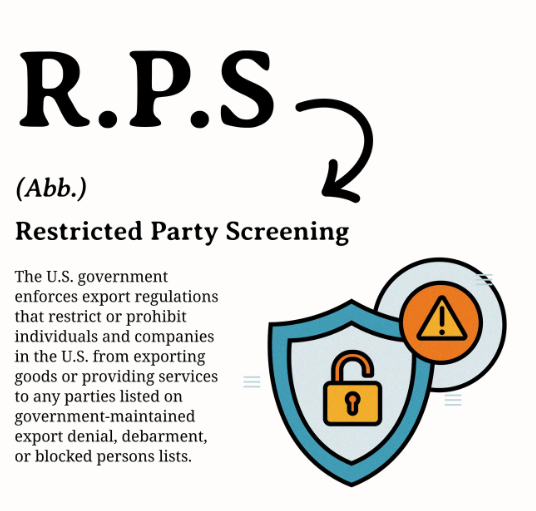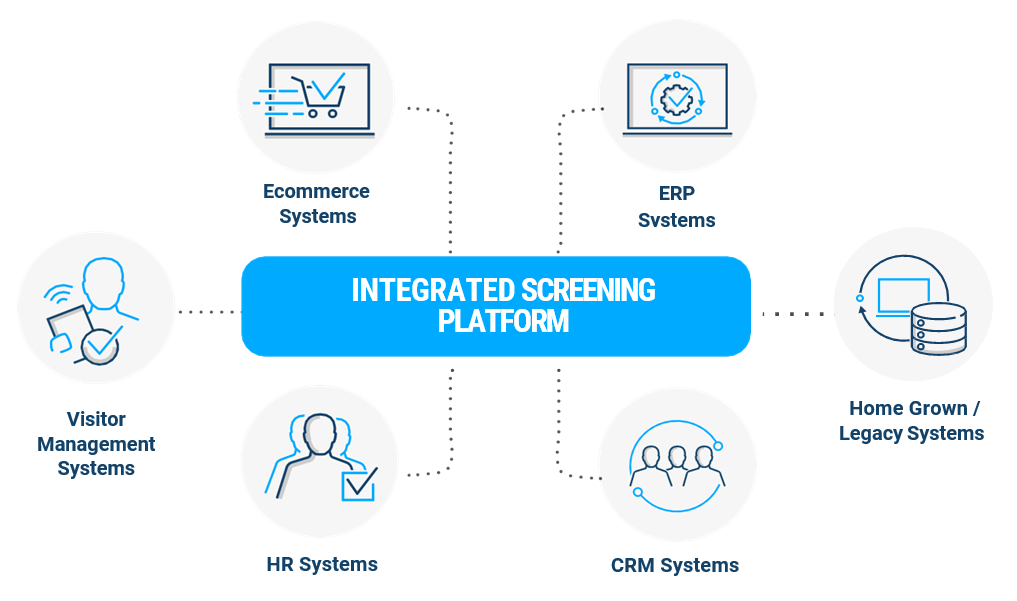Restricted Party Screening Tools and Compliance Tips
In today’s global business environment, organizations that deal in international trade must ensure they are compliant with an increasingly complex network of laws and regulations. One of the most critical components of customs and trade compliance is restricted party screening (RPS). Failing to properly vet customers, suppliers, or business partners can lead to heavy fines, trade restrictions, loss of export privileges, or reputational damage.

This article outlines the key tools and best practices for implementing an effective restricted party screening program as part of a robust compliance strategy.
What Is Restricted Party Screening?
Restricted party screening refers to the process of checking individuals, companies, and other entities against government-issued denied or restricted party lists. These lists are maintained by regulatory authorities such as:
- U.S. Department of Commerce – Bureau of Industry and Security (BIS)
- U.S. Department of the Treasury – Office of Foreign Assets Control (OFAC)
- European Union Consolidated Sanctions List
- United Nations Security Council Consolidated List
- Other national and regional government agencies
These lists include individuals and organizations that are sanctioned, embargoed, or otherwise prohibited from engaging in certain types of trade or transactions. Screening is typically done during onboarding, prior to shipment, and periodically during the relationship lifecycle.
Why Restricted Party Screening Matters
Restricted party screening is a legal obligation for exporters, freight forwarders, and any business involved in cross-border trade. It also plays a critical role in mitigating risk and maintaining integrity in supply chains.
Key reasons to implement RPS include:
- Legal Compliance: Regulatory bodies around the world require businesses to avoid dealings with restricted entities.
- Risk Mitigation: Avoid potential civil and criminal penalties, including multimillion-dollar fines.
- Reputation Protection: Engaging with blacklisted parties can result in media scrutiny and customer distrust.
- Facilitating Trade Flows: Demonstrating strong compliance systems can make customs clearance and audits more efficient.

In short, RPS is not just about avoiding trouble—it’s about building a resilient and trustworthy trade network.
Tools for Effective Restricted Party Screening
Numerous tools are available to help businesses automate and manage their screening obligations. These range from free government databases to advanced enterprise compliance software. Below are some widely used options:
1. Government Screening Tools
- OFAC Sanctions List Search (U.S. Treasury): Allows users to check names against Specially Designated Nationals (SDN).
- EU Sanctions Map: Provides information on persons and entities under EU sanctions.
- UN Sanctions List: A searchable online database maintained by the United Nations.
These tools are free but require manual checking and may not scale well for companies with large transaction volumes.
2. Third-Party Screening Software
Many organizations use integrated compliance platforms to automate restricted party checks. These tools typically offer:
- Real-time screening against multiple global watchlists
- Batch processing for bulk uploads
- Screening API integration into ERP or CRM systems
- Automated alert handling and audit trails

Popular platforms include:
- Descartes Visual Compliance
- SAP Global Trade Services (GTS)
- Amber Road (now part of E2open)
- Thomson Reuters ONESOURCE
- Dow Jones Risk & Compliance
These systems not only improve accuracy but also help businesses demonstrate due diligence in audits.
Best Practices for Restricted Party Screening
Having the right tools is essential, but how they are used determines success. The following best practices help build a reliable RPS program as part of a broader customs and trade compliance effort:
1. Screen All Parties Involved
This includes not only direct buyers or suppliers but also:
- Freight forwarders
- Agents
- Brokers
- End-users
- Financial institutions involved in the transaction
Screen everyone linked to the trade process to avoid indirect violations.
2. Screen at Multiple Stages
Conduct screening:
- During initial onboarding or due diligence
- Prior to each shipment
- When changes occur in the company name, address, or ownership
- Periodically, even if no changes have been reported
This layered approach ensures that sanctions updates or list changes don’t catch your business off guard.
3. Automate Wherever Possible
Manual screening is error-prone and time-consuming. Automate screening through ERP integration or scheduled batch jobs. Many modern compliance platforms offer tools to embed RPS directly into order management and customer onboarding workflows.
4. Document and Audit
Keep detailed logs of:
- Screening dates and times
- Lists used
- Results and any matches
- Resolution steps (e.g., false positive clearance)
These records are vital in demonstrating your company’s compliance posture during audits or investigations.
5. Train and Update Staff
Employees involved in procurement, sales, shipping, and finance should understand the basics of RPS and how to act on potential alerts. Regular training helps avoid unintentional violations.
Challenges and How to Address Them
Despite best efforts, RPS can be complex. Some common challenges include:
- False Positives: Matching common names may generate irrelevant alerts. Use tools with intelligent matching logic to reduce noise.
- List Changes: Sanctions lists update frequently. Make sure your screening system pulls data in real time or is updated daily.
- Global Variance: Different countries have unique lists and thresholds. Choose tools that aggregate and normalize these sources effectively.
Overcoming these issues requires both the right technology and a responsive internal process.
Conclusion
Restricted party screening is a vital part of modern customs and trade compliance. It protects your business from regulatory penalties, reputational harm, and supply chain disruption. By combining smart tools with disciplined practices—like multi-stage screening, automation, and thorough documentation—companies can manage this complex task with confidence and efficiency.
As regulations evolve and global scrutiny increases, building a robust RPS system is no longer optional—it’s essential.
Industry Insights
news via inbox
Nulla turp dis cursus. Integer liberos euismod pretium faucibua








